Divine Legacies: History and Captivating Facts of the Roman Pantheon
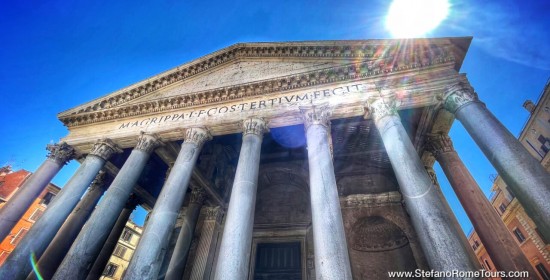
Welcome to Stefano Rome Tours, where history comes alive and the wonders of the Roman Empire are yours to explore on our private tours of Rome and Rome Shore Excursions from Civitavecchia.
In this blog, History and Captivating Facts of the Roman Pantheon, we invite you to join us on a virtual exploration of the Pantheon, unraveling its fascinating history and unearthing hidden curiosities that make it a true wonder of the world. From its origins as a pagan temple dedicated to the gods of Rome to its transformation into a Christian church, and later historical figures buried within its hallowed walls, the Pantheon has witnessed centuries of cultural shifts and architectural adaptations.
As you step into the hallowed halls of the Pantheon, you'll be transported back in time, surrounded by the echoes of centuries past. So let’s delve into the depths of its past to uncover the layers of intrigue that have made it an enduring symbol of Rome's grandeur.
History and Captivating Facts of the Roman Pantheon
Origins of the Pantheon:
The construction of the Pantheon, one of the most iconic architectural wonders of ancient Rome, can be attributed to the reign of Emperor Hadrian in the 2nd century CE. However, the origins of the Pantheon can be traced back to an earlier period in Roman history.
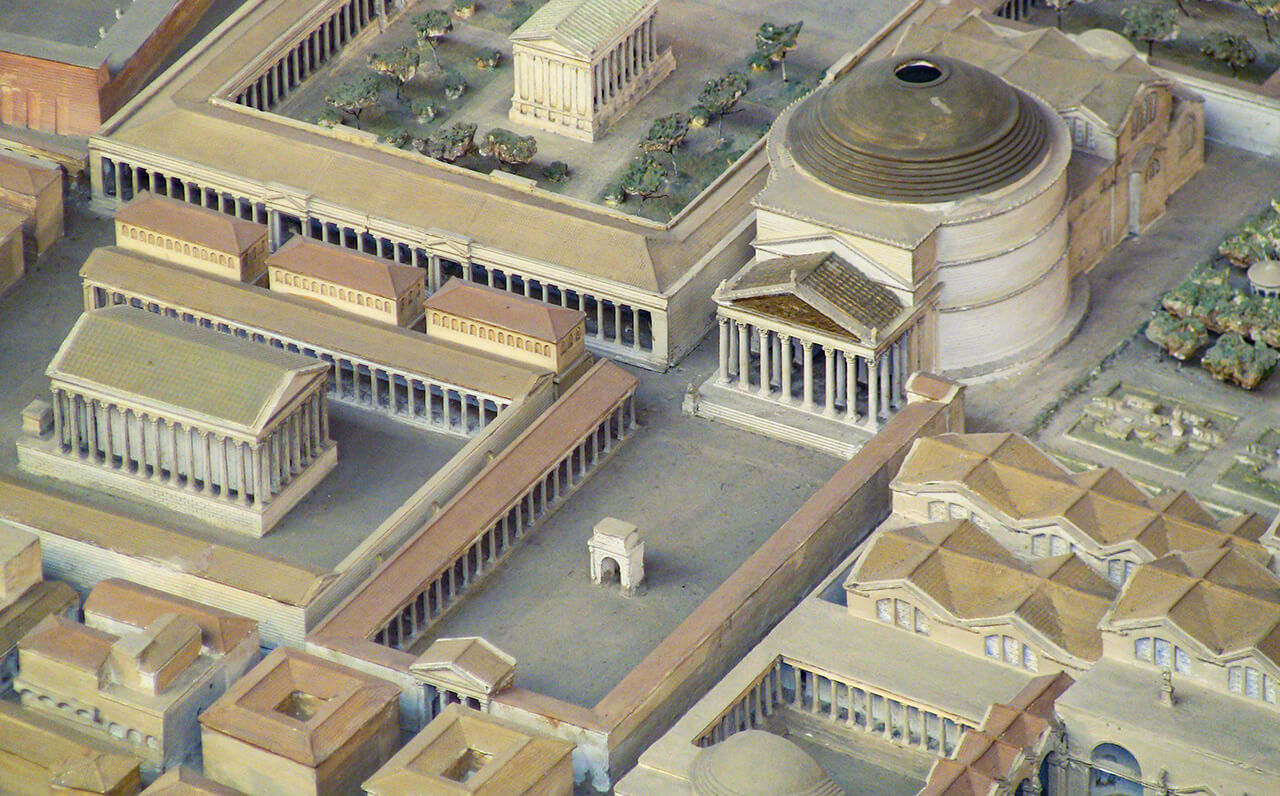
The first Pantheon, referred to as the Pantheon Agrippae, was commissioned by Marcus Vipsanius Agrippa, a close associate of Emperor Augustus, in 27 BCE. This original structure was dedicated to the gods of ancient Rome and stood on the same site where the current Pantheon is located. Unfortunately, the original Pantheon was destroyed by fire in 80 CE, leaving only a few remnants behind.
Emperor Hadrian, known for his passion for architecture and cultural patronage, took a keen interest in rebuilding the Pantheon. In 118 CE, he commissioned the construction of a new Pantheon that would surpass the previous structure in grandeur and magnificence. To bring his vision to life, he enlisted the services of the renowned architect Apollodorus of Damascus.
Apollodorus, celebrated for his innovative designs, set out to create a temple that would become an architectural marvel. The construction of the Pantheon spanned several years and was completed in 125 CE.
Divine Purpose of the Pantheon from Ancient Rome to Christianity
Pantheon as the ancient Roman Temple
The temple was dedicated to all the gods of ancient Rome and was known as the Pantheon, derived from the Greek words "pan," meaning all, and "theos," meaning gods. The Romans believed in a vast array of deities, each associated with different aspects of life, nature, and human endeavors. The Pantheon was a place where people could come to express their devotion, seek divine favor, and offer prayers and sacrifices to the gods.
The Pantheon in ancient Rome served as a temple dedicated to the worship of the gods and goddesses of the Roman pantheon. Its primary purpose was to provide a sacred space where religious rituals, offerings, and ceremonies could occur.
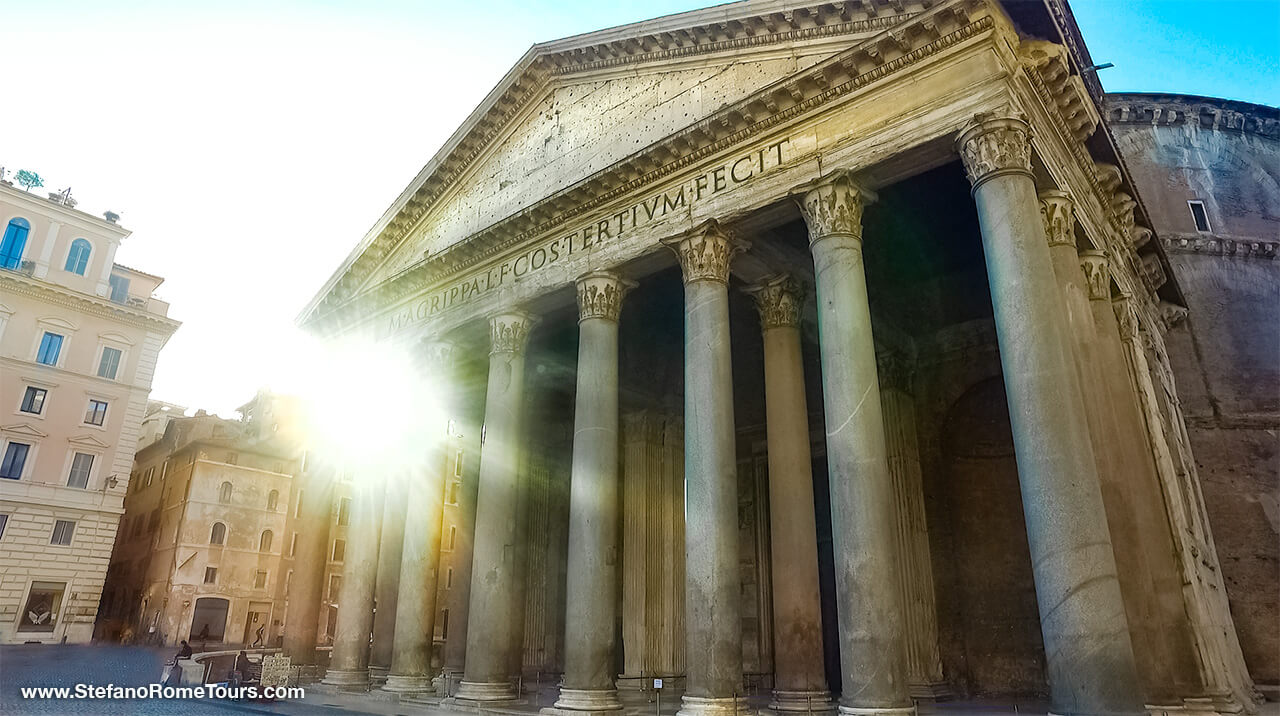
Beyond its religious function, the Pantheon also served as a symbol of imperial power and Roman grandeur. Emperors, as the earthly representatives of the gods, often sponsored the construction and maintenance of such grand structures to solidify their authority and demonstrate their piety. The Pantheon was commissioned by Emperor Hadrian and stands as a testament to his patronage of the arts and his reverence for the gods.
Additionally, the Pantheon may have also served as a gathering place for important events and assemblies. It is believed that some imperial ceremonies, public speeches, and meetings might have taken place within its grand halls. The temple's vast and awe-inspiring interior could accommodate a considerable number of people, making it an ideal venue for public gatherings.
How was the Pantheon converted into a church?
Throughout its history, the purpose of the Pantheon evolved. By the 6th and 7th centuries, Christianity had gained significant influence in the Roman Empire, and the worship of ancient Roman gods was gradually reduced during the decline and fall of the Roman Empire. This transformation allowed the Pantheon to continue as a sacred space but under a new religious context.
In 609 CE, Emperor Phocas gifted the Pantheon to Pope Boniface IV as a gesture of goodwill. The exact motivations behind this gift are not entirely clear, but it is believed to be an effort to establish stronger ties between the Church and the state. Pope Boniface IV saw an opportunity to repurpose the Pantheon and consecrate it as a Christian church dedicated to the Virgin Mary and all the martyrs.
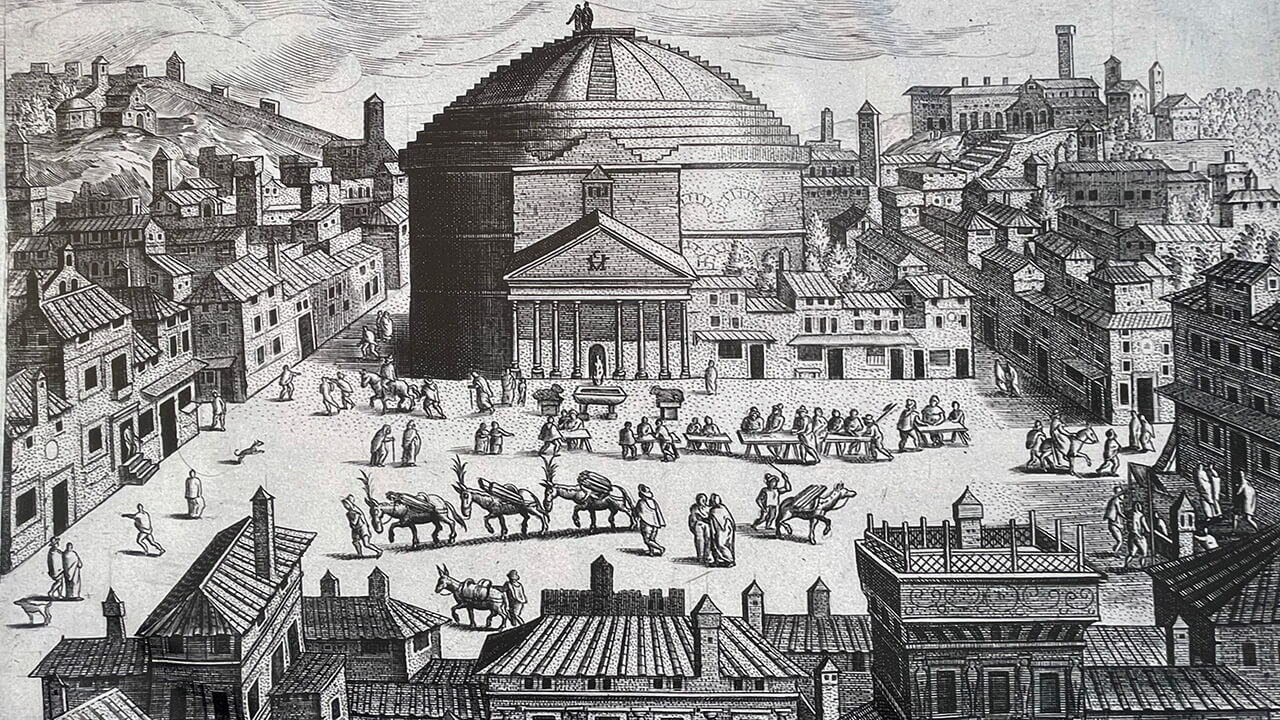
This act aimed to convert a prominent pagan structure into a Christian place of worship, aligning with the Church's mission to assert its influence and establish Christianity as the dominant religion.
The transformation involved removing the statues and symbols associated with pagan deities and replacing them with Christian iconography. The temple's name, "Pantheon," meaning "all the gods," was changed to "Santa Maria ad Martyres" or "St. Mary and the Martyrs" to reflect its new Christian dedication.
The conversion of the Pantheon into a church played a significant role in preserving the structure itself. Unlike many other ancient Roman buildings that fell into disrepair or were dismantled over time, the Pantheon's conversion allowed it to continue serving a religious function and ensured its survival into the present day.
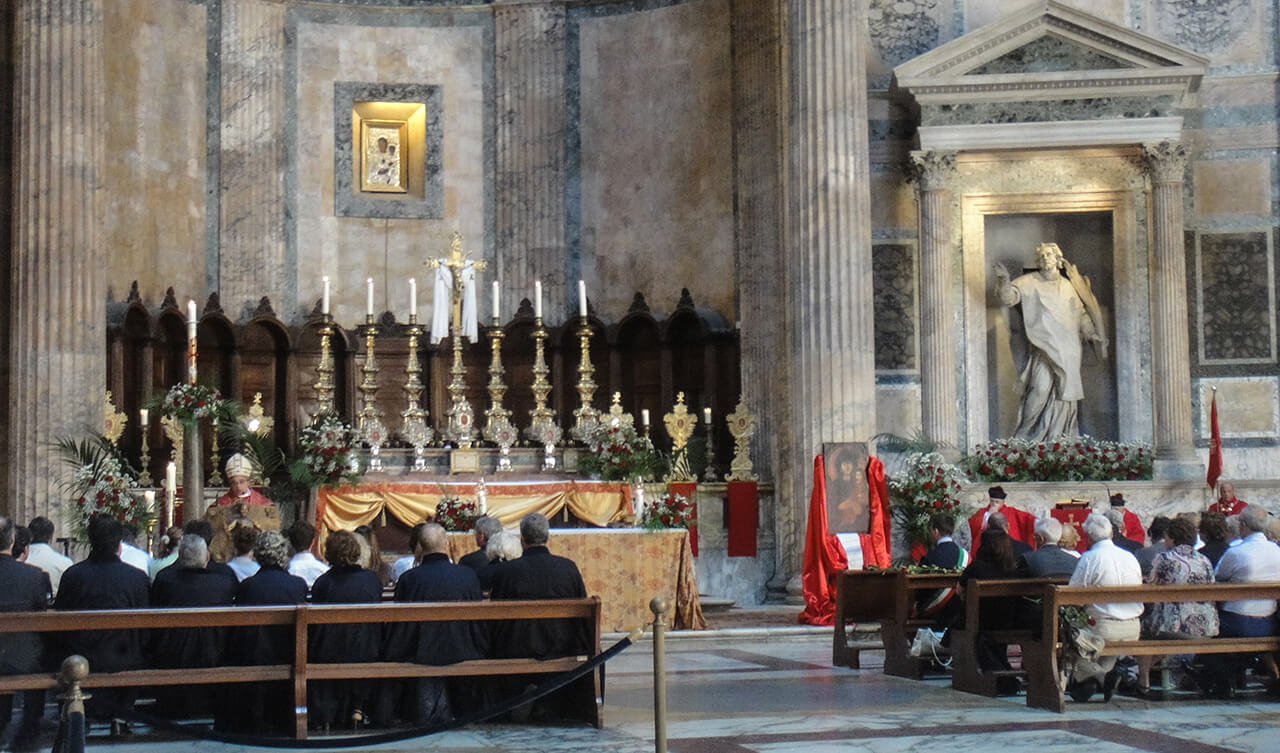
Today, the Pantheon stands as a remarkable architectural and historical landmark, attracting visitors from around the world. While its original religious purpose has changed, it continues to inspire awe and reverence as a testament to ancient Roman civilization's architectural brilliance and the enduring legacy of their religious beliefs.
Architectural Marvels of the Pantheon
The Pantheon's design showcased a fusion of classical Roman and Greek architectural elements.
The temple was circular in shape, featuring a grand portico with massive granite columns and a triangular pediment. The most distinctive feature of the Pantheon was its colossal dome, which showcased remarkable engineering prowess. The dome was constructed using a combination of concrete and lightweight volcanic rock called pumice, allowing for a large and self-supporting structure.
The Facade of the Pantheon
The facade of the Pantheon in Rome is a remarkable example of ancient Roman architectural design. It showcases a harmonious blend of Classical elements and innovative structural techniques.
The porch of the Pantheon may appear shorter in comparison to the circular temple due to an interesting historical reason. When the Pantheon was constructed, the builders encountered challenges in transporting the massive columns from different locations to Rome. As a result, the columns ended up being 10 feet shorter than originally intended.
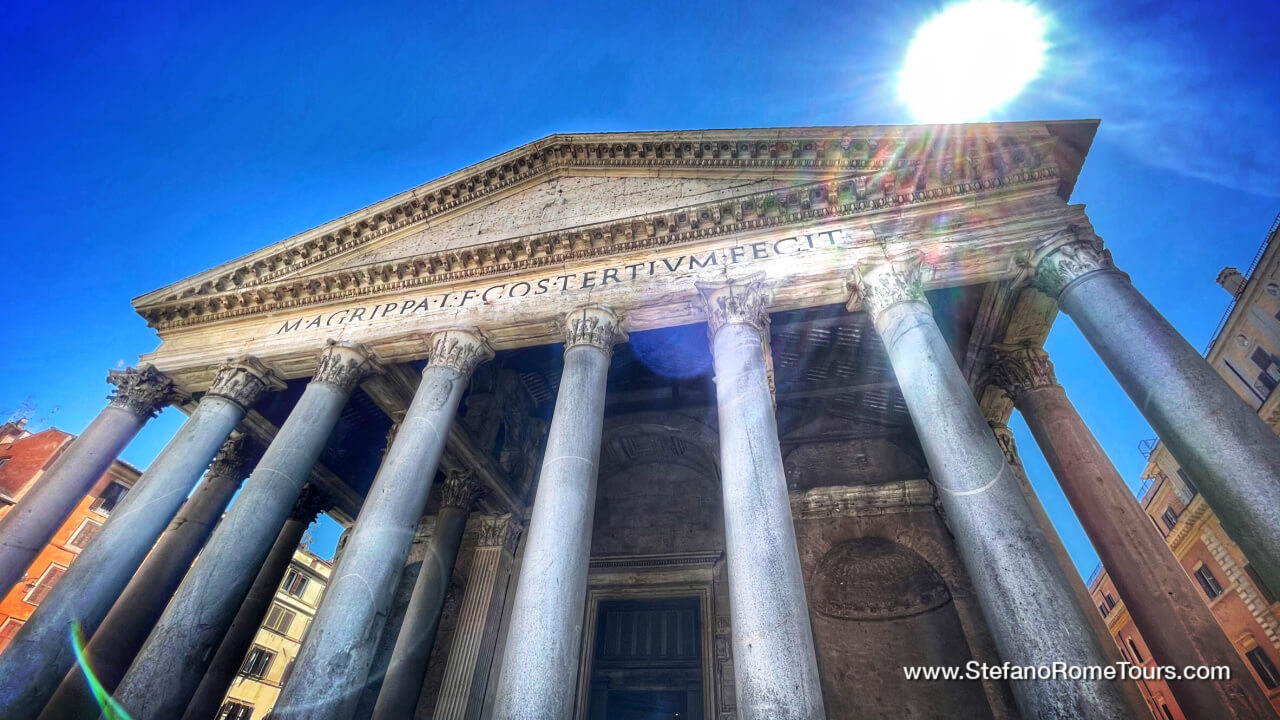
To accommodate the shorter columns, the height of the porch was adjusted accordingly. This adjustment created the visual effect of the porch appearing shorter in relation to the taller circular temple behind it.
This disparity in height between the porch and the circular temple is a result of the practical necessity to accommodate the columns and maintain the overall structural integrity of the Pantheon. Despite this difference, the architects and builders ensured that the porch and the circular temple were visually harmonious and aesthetically pleasing when viewed as a whole. This variation adds an intriguing aspect to the architecture of the Pantheon, showcasing the ingenuity and problem-solving skills of the ancient builders.
Pediment: The triangular pediment crowns the entrance of the Pantheon's facade. It featured intricate relief sculptures depicting various mythological scenes. Unfortunately, most of these sculptures have been lost over time.
Entablature: Above the columns, the entablature extends horizontally across the facade. It consists of three sections: the architrave, frieze, and cornice. The architrave is a plain, horizontal band, while the frieze displays decorative relief carvings. The cornice serves as a decorative crown, featuring ornamental moldings.
Inscriptions on the Pantheon:
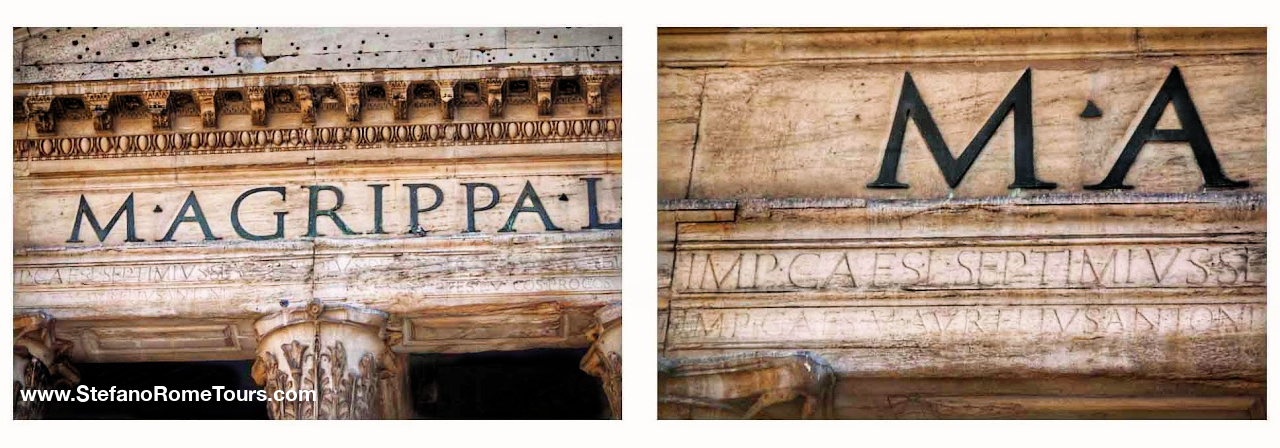
The Latin inscription "M·AGRIPPA·L·F·COS·TERTIVM·FECIT" can be seen on the entablature. It honors Marcus Agrippa, who originally built the Pantheon during his third consulship.
The Latin inscription below "IMP[ERATOR] CAES[AR] L[UCIUS] SEPTIMIUS SEVERUS … ET IMP[ERATOR] M[ARCUS] AURELIUS ANTONINUS… PANTHEUM VETUSTATE CORRUPTUM CUM OMNI CULTU RESTITUERUNT" can be translated as "Emperor Caesar Lucius Septimius Severus … and Emperor Marcus Aurelius Antoninus… restored the Pantheon, which had fallen into decay, with all its adornment."
This inscription refers to the restoration of the Pantheon during the reigns of Emperor Septimius Severus and Emperor Caracalla (Marcus Aurelius Antoninus). By the time of their rule, the Pantheon had suffered from years of neglect and decay.
The Round Shape of the Pantheon
The Rotunda of the Pantheon is a magnificent architectural space that embodies elegance, harmony, and a sense of divine grandeur. Let's explore its purpose, architectural features, and artistic details:
The rotunda served as the main interior space of the Pantheon, designed to house the religious ceremonies and worship of the ancient Roman gods. It was a place of reverence and contemplation, where individuals could connect with the divine.
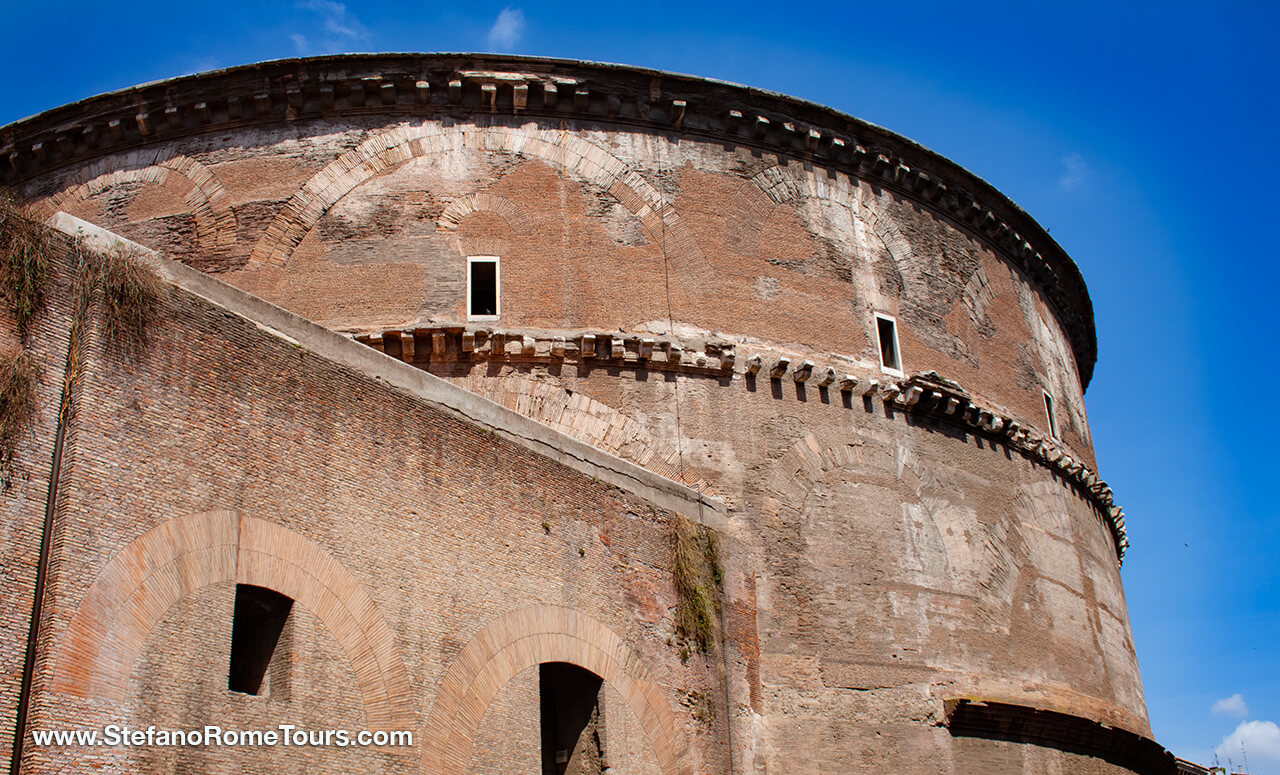
The rotunda is designed as a perfect sphere, with a diameter equal to its height. This geometric perfection creates a sense of balance and harmony, showcasing the meticulous attention to proportion in ancient Roman architecture.
Along the walls of the rotunda, there are a series of semicircular niches. These niches originally housed statues of various gods and goddesses, further emphasizing the sacred nature of the space. Today, most of these statues are no longer present, but the niches themselves remain as a testament to the original design.
The walls of the rotunda were once adorned with marble cladding, showcasing the opulence and artistic sensibilities of ancient Rome. Though much of the marble has been lost or removed over time, some sections still retain their original elegance.
The interior featured intricate decorative elements, such as elaborate moldings, stucco work, and ornamental motifs. These embellishments added to the visual splendor of the space, enhancing the overall aesthetic experience for worshipers.
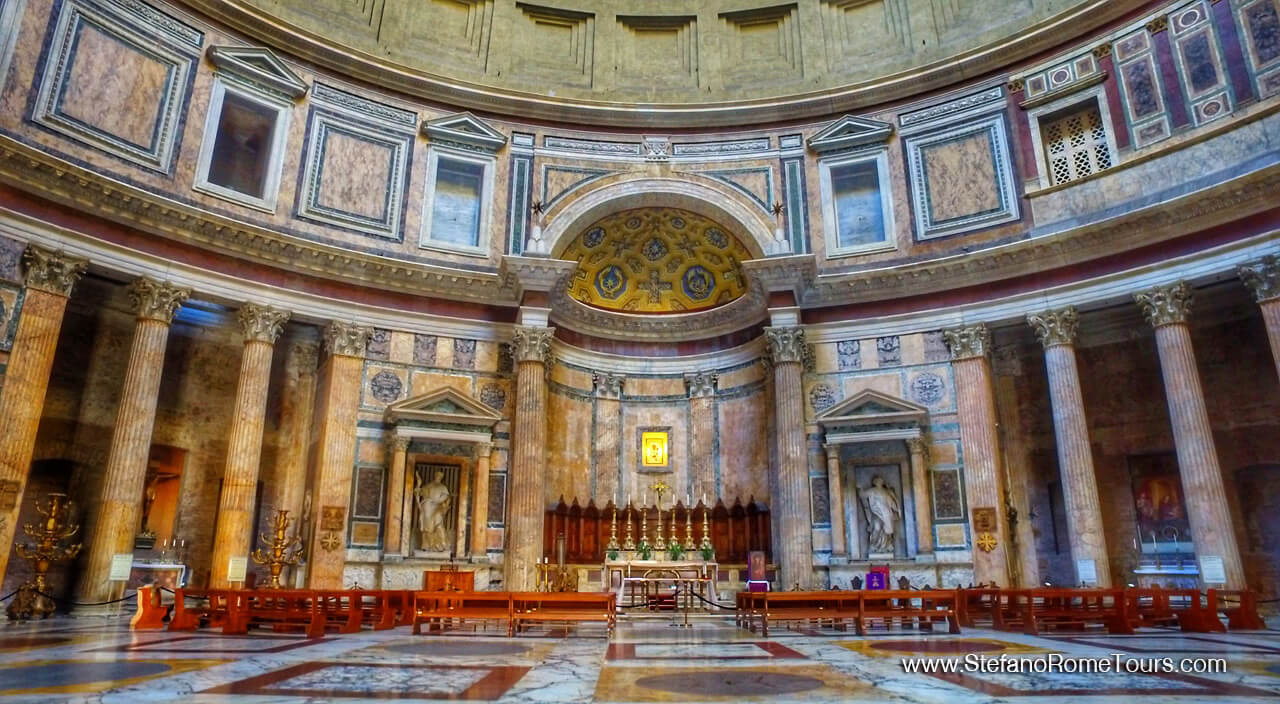
The Floor of the Pantheon
The Pantheon's floor is made of a combination of marble and porphyry, a dense and durable volcanic rock. The intricate design of the floor consists of geometric patterns and decorative motifs, showcasing the exquisite craftsmanship of the ancient Roman artisans.
In terms of functionality, the floor of the Pantheon is not entirely flat. It has a slight slope, intentionally designed to facilitate the drainage of rainwater that enters the building through the oculus during inclement weather. This architectural ingenuity ensures that the interior of the Pantheon remains dry and minimizes the risk of flooding.
When it rains, the rainwater enters the Pantheon through the oculus, creating a mesmerizing spectacle as it falls in a vertical column. The sloped floor directs the water toward drainage channels or gutters. These channels effectively collect and guide the water out of the building, preventing it from pooling and causing any damage to the structure.
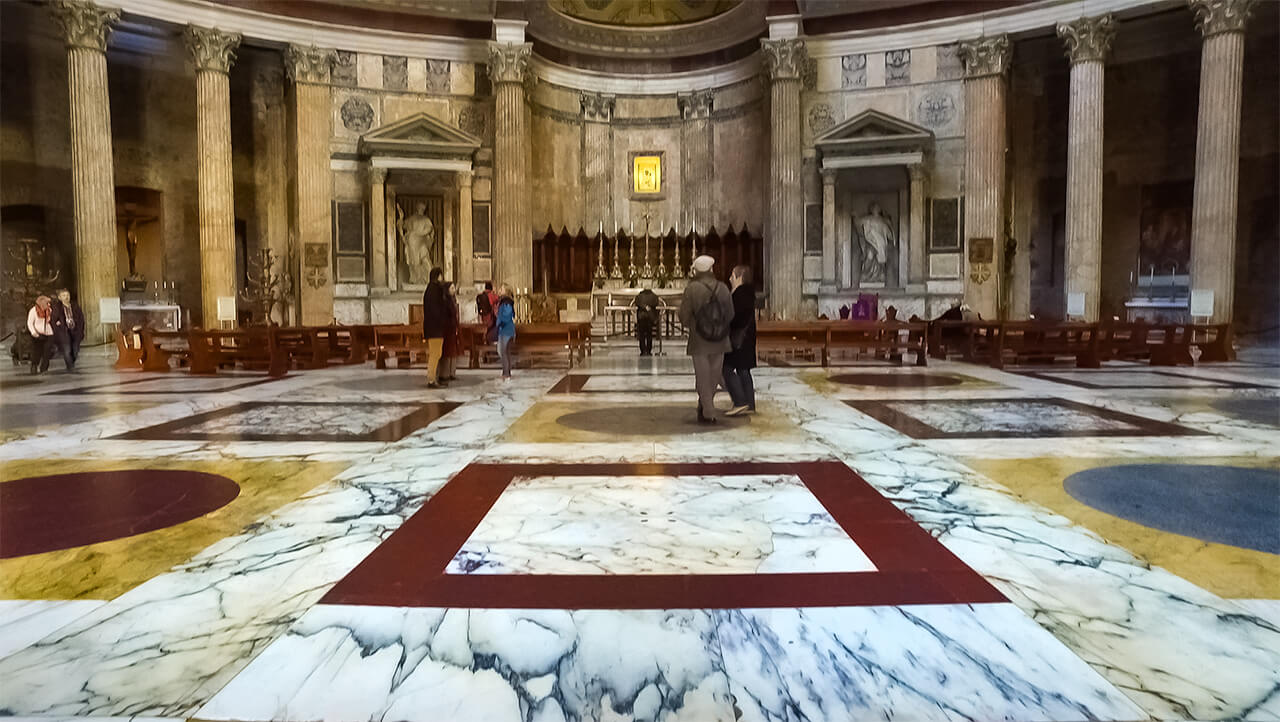
The efficient drainage system in the Pantheon demonstrates the meticulous planning and engineering expertise of the ancient Romans. By carefully considering the natural elements, such as rainwater, they ensured that the architectural masterpiece could withstand the test of time and remain functional even during adverse weather conditions.
Experiencing the Pantheon during rainfall is a unique and immersive encounter. As the rainwater enters through the oculus and gently flows towards the drainage channels, visitors can witness the harmonious interaction between nature and architecture. This ingenious design element further enhances the captivating atmosphere of the Pantheon, adding to its allure and the sense of wonder it evokes.
The Dome of the Pantheon
The dome of the Pantheon holds the record for being the largest unreinforced concrete dome in the world. It is an astonishing engineering achievement considering its size and the fact that it was constructed over 2,000 years ago.
The architect Apollodorus of Damascus designed the dome with careful consideration of its proportions and structural integrity. The dome has a perfect hemisphere shape, meaning its height is equal to its radius. This harmony in design creates a sense of balance and elegance.
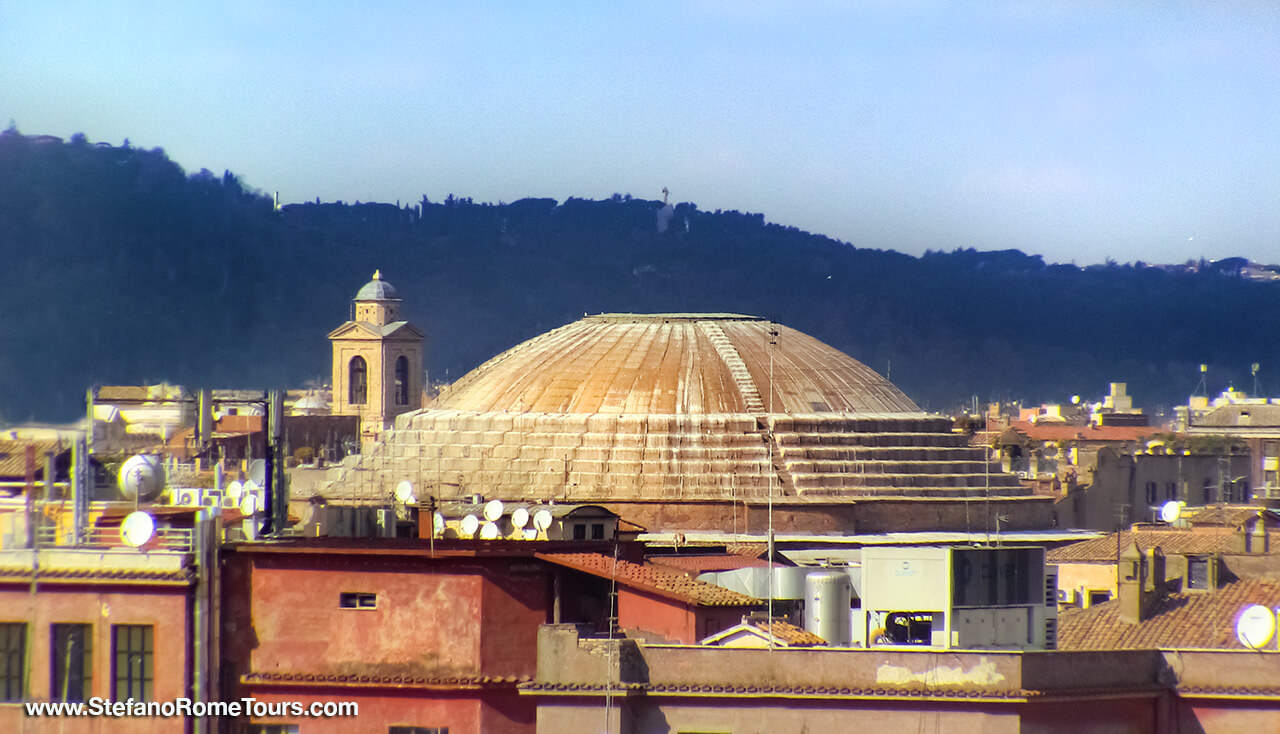
The Romans were pioneers in the use of concrete as a construction material, and the Pantheon's dome is a prime example of their expertise. The concrete used in the dome consisted of a mixture of volcanic ash, lime, and water, with the addition of lightweight aggregates such as pumice stone.
The concrete used in the lower portions of the dome was made with heavier aggregates, ensuring a stronger base. As the construction moved higher, the composition of the concrete changed. Lighter aggregates, such as pumice stone, were added to reduce the overall weight of the dome.
To reduce the weight of the dome without compromising its strength, a series of coffers, or recessed panels, were incorporated into the ceiling. These coffers served both an aesthetic and structural purpose. They create a visually stunning effect and help distribute the weight of the dome evenly.
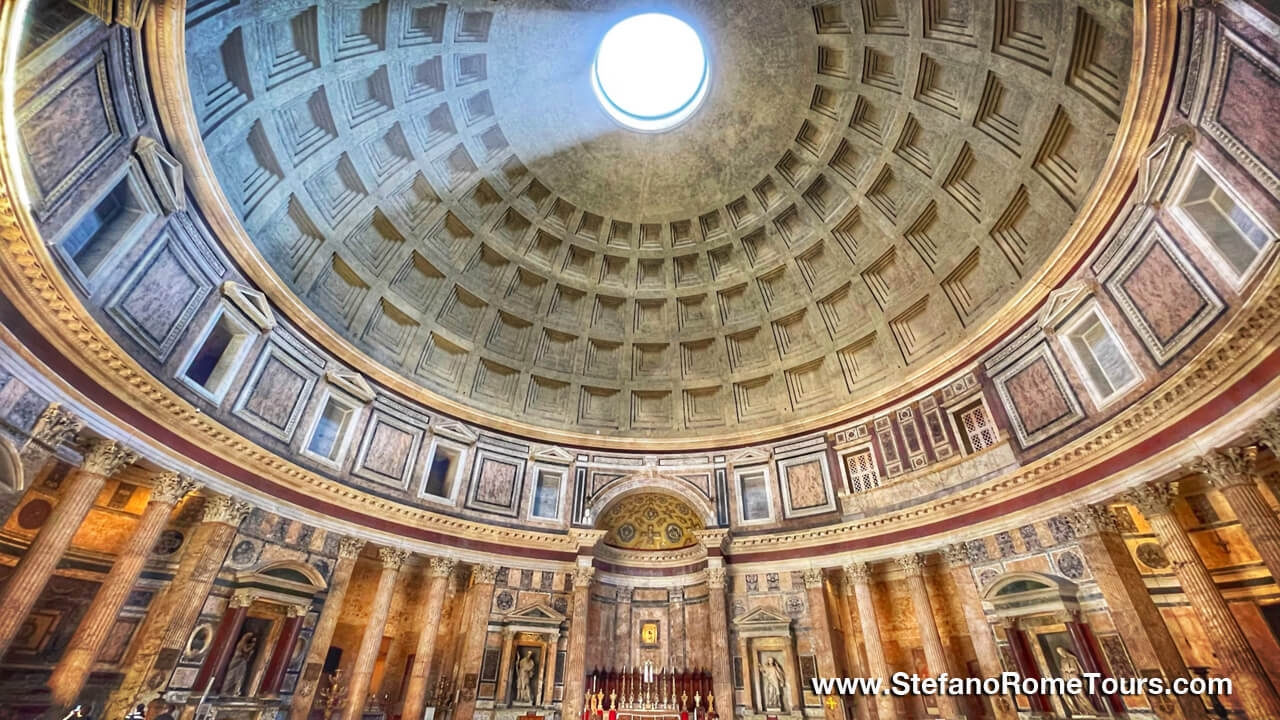
The construction of the dome began from the bottom and progressed upward. Wooden centering, or scaffolding, was erected to support the weight of the concrete during construction. The centering provided temporary support until the concrete cured and gained sufficient strength.
To reinforce the structural integrity of the dome, various supporting elements were incorporated. Horizontal brick arches, known as relieving arches, were built into the walls. These arches help distribute the weight of the dome and direct it towards the sturdy walls of the Pantheon. Additionally, iron clamps were used to secure the bricks and prevent shifting or cracking.
The Oculus of the Pantheon
The oculus of the Pantheon stands as a testament to the architectural genius of the ancient Romans. Its functional design elements combined with its awe-inspiring beauty have captivated visitors for centuries. The interplay of light, the sense of connection to the celestial realm, and the structural stability it provides all contribute to the enduring fascination and reverence surrounding this remarkable architectural feature.
The oculus plays a crucial role in distributing the weight of the dome and relieving stress. By allowing a portion of the load to be directed outward, the oculus helps prevent excessive pressure on the walls and supports of the Pantheon.
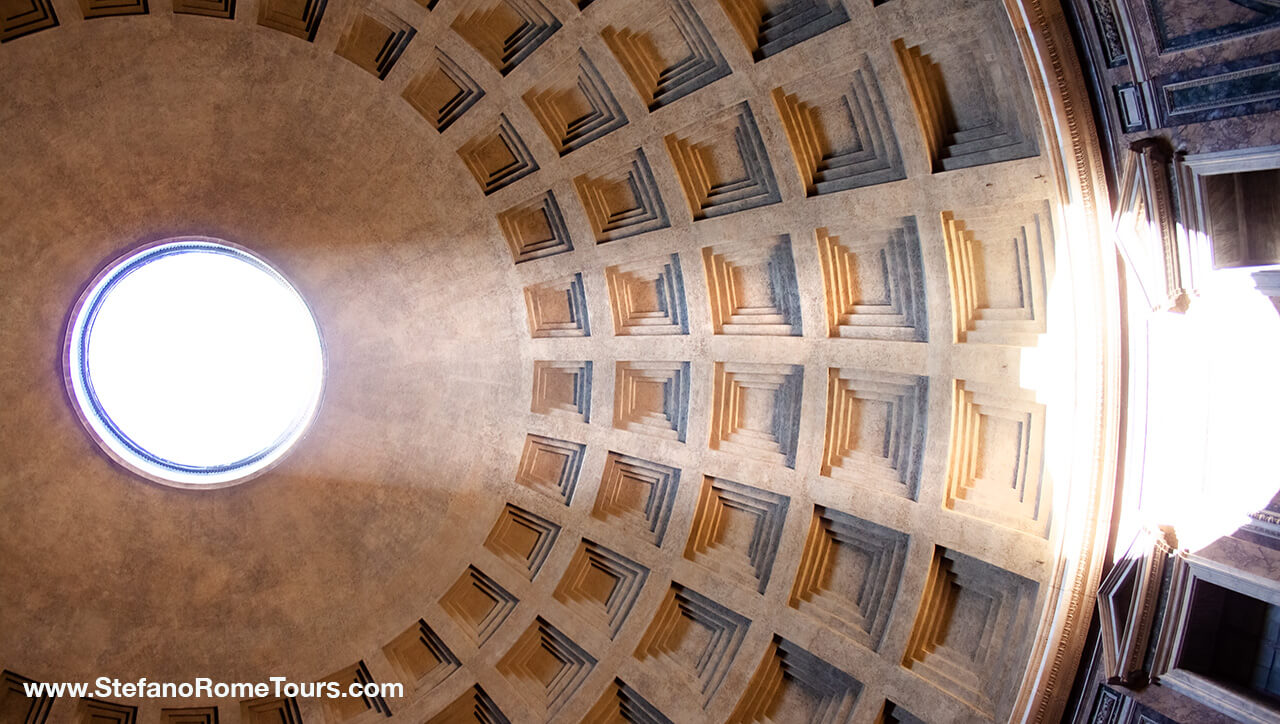
The oculus acts as a natural ventilation system, allowing air to circulate within the interior of the Pantheon. This ventilation helps regulate the temperature and humidity, preventing the accumulation of moisture and potential damage to the structure.
The design of the oculus contributes to the Pantheon's remarkable stability during earthquakes. The open center reduces the overall mass of the dome, making it less susceptible to the forces generated by seismic activity.
One of the most captivating aspects of the oculus is its ability to fill the Pantheon's interior with natural light. As sunlight filters through the opening, it creates a dynamic play of light and shadow, transforming the space throughout the day. The ever-changing patterns of light give the interior a sense of ethereal beauty and create a unique ambiance.
The oculus has symbolic significance, representing a connection between the earthly realm and the heavens above. As sunlight pours through the opening, it creates a focal point that draws the eye upward, evoking a sense of transcendence and divine presence.
The contrast between the darkened interior and the bright circle of light streaming through the oculus creates a dramatic visual effect. This contrast accentuates the scale and grandeur of the dome, enhancing the overall aesthetic impact of the Pantheon's interior space.
The Pantheon as a burial site
The Pantheon in Rome serves as the final resting place for several notable individuals. Here are some of the notable figures buried inside the Pantheon:
Italian Kings: The Pantheon is the burial place of several Italian kings. These include Vittorio Emanuele II, the first King of Italy, and his successor, Umberto I. Their tombs are located in the right transept of the Pantheon.
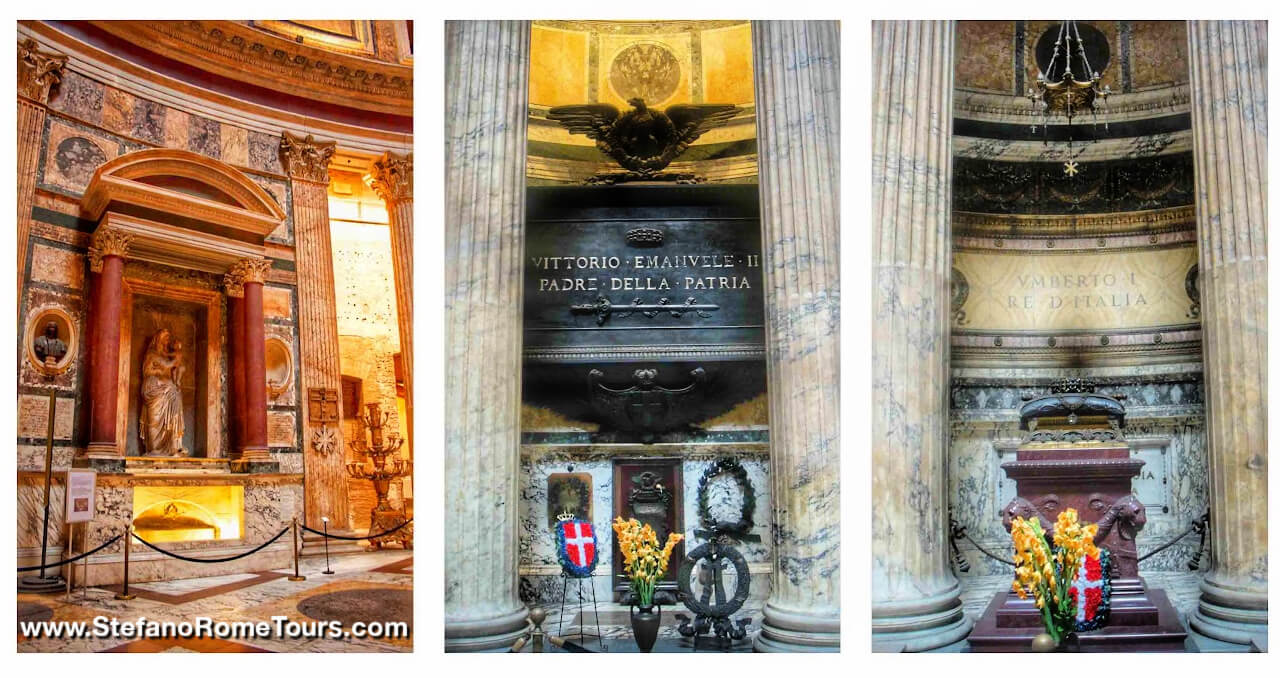
Raphael: The renowned Italian painter and architect Raphael Sanzio, widely known simply as Raphael, is buried in the Pantheon. His tomb, located near the entrance on the right-hand side, honors his contributions to the arts during the High Renaissance.
Annibale Carracci: Annibale Carracci, a prominent Italian Baroque painter, is also buried in the Pantheon. His tomb can be found near Raphael's tomb, paying tribute to his artistic achievements.
Baldassare Peruzzi: Baldassare Peruzzi, an influential architect and painter of the Renaissance, is buried in the Pantheon as well. His tomb is situated near the entrance on the left side.
The presence of these distinguished individuals further adds to the historical and cultural significance of the Pantheon as a place of honor and remembrance.
The Barbarian Barberini and the Pantheon’s “Donkey Ears”
During the 17th century, the Pantheon underwent notable transformations both on its exterior and interior. The porch of the Pantheon faced regular renovations, but Pope Urban VIII from the powerful Barberini family made a controversial decision that stirred public discontent. In an unfortunate act, he ordered the removal of the porch's bronze beams, which were later repurposed for weaponry.
This practice of stripping Roman monuments of their bronze was not uncommon during that time. In fact, the influential Italian Barberini noble family stripped so many monuments of their valuable elements that it resulted in this famous quote that still exists among Romans: “quod non fecerunt barbari, fecerunt Barberini” – “What the barbarians didn’t do, the Barberini did”
To pacify the outraged public, Pope Urban VIII claimed that the bronze was originally intended for Bernini's Baldacchino, a monumental canopy for St Peter’s Basilica.
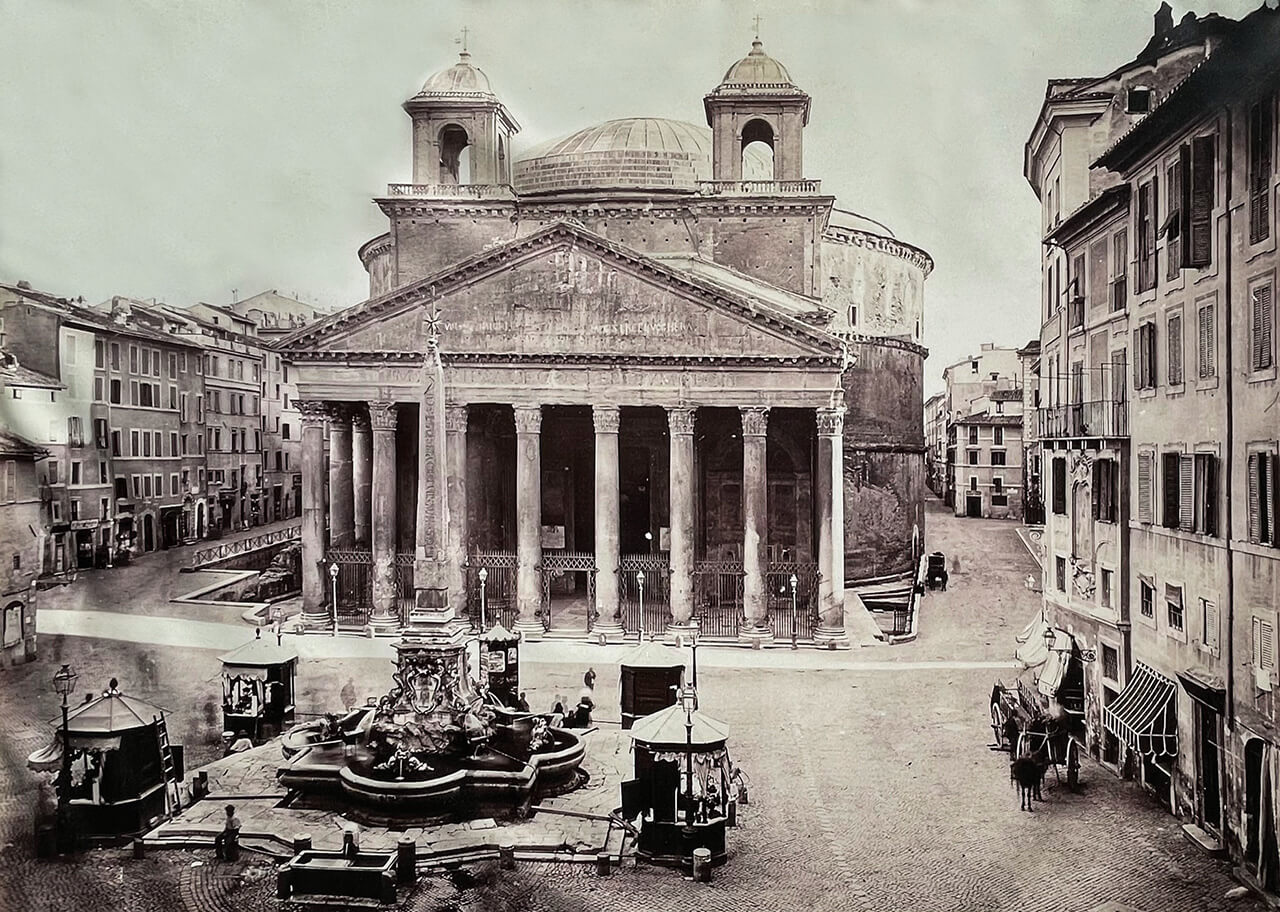
However, the most significant alteration made during this period was Pope Urban VIII's decision to add two bell towers to the Pantheon. The original central bell tower, which had been present since the Middle Ages, was removed and replaced by two new towers situated above the pediment.
This modification drastically changed the Pantheon's appearance and received unfavorable reactions from the public. As a result, the towers were mockingly referred to as the "ass's ears." By the late 1800s, Pope Pius IX removed the twin bell towers in an effort to return the Pantheon closer to its traditional appearance.
Legends, Myths, and Mysteries of the Pantheon
The Roman Pantheon boasts a multitude of intriguing curiosities and legends that have sparked the imagination throughout the ages. One remarkable legend revolves around the construction of the dome. It is said that Emperor Hadrian consulted with renowned mathematician and philosopher Euclid to ensure the structural integrity of the dome's design. Here are some more lesser-known details that might be considered "secrets" of the Pantheon:
The Exact Construction Techniques of the Pantheon
Despite extensive research and study, the precise construction techniques employed in building the Pantheon's massive dome remain somewhat of a mystery. The Romans left no detailed records of their engineering methods, leaving scholars to speculate and hypothesize about the exact techniques used to create such an impressive structure.
Mysteries of the ancient rituals inside the Pantheon:
While the Pantheon is known as a temple dedicated to the Roman gods, the exact rituals and ceremonies that took place inside remain somewhat of a mystery. The specific religious practices carried out within the Pantheon during ancient times are not well-documented, leaving room for speculation and imagination.
Astronomical Alignments of Pantheon:
It is speculated that the design of the Pantheon incorporates astronomical alignments, allowing sunlight to enter the building in specific ways during solstices and equinoxes. The oculus, for example, may have been deliberately positioned to align with celestial events, further emphasizing the connection between the structure and the heavens.
An example of this is the Summer Solstice. During the Summer Solstice, the oculus creates a dramatic effect akin to a powerful laser, illuminating the round space as if the heavens themselves are shining their brightest light. The beam then gracefully glides across the walls, descending to the floor before passing along the main entrance, resembling an enormous spotlight that steals the show.
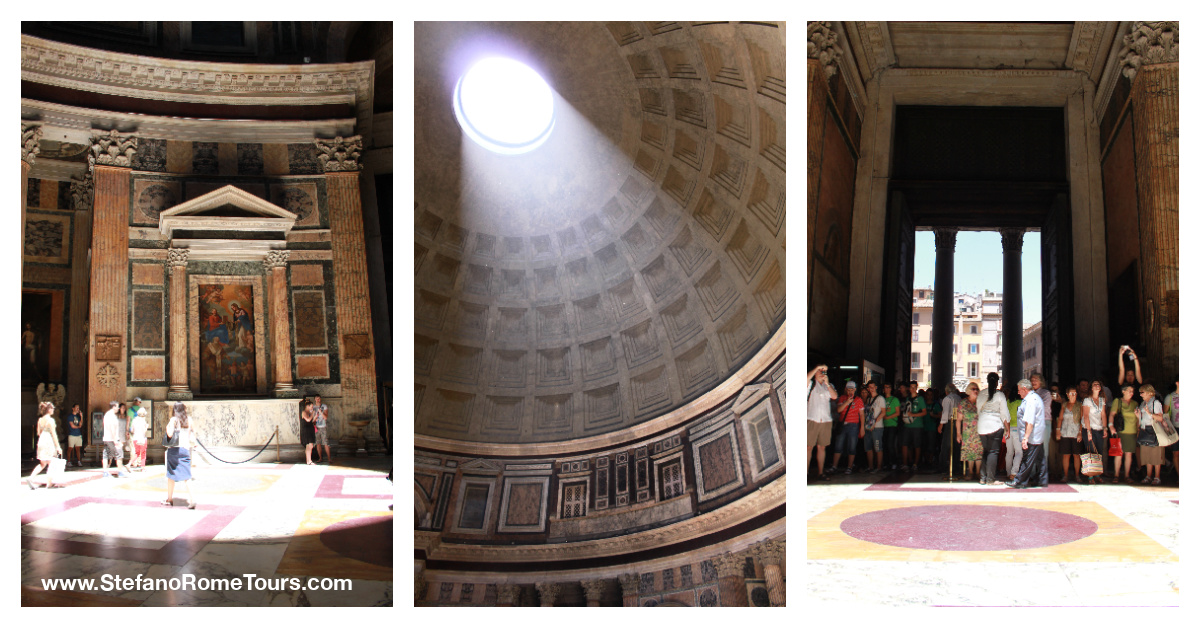
Symbolism and Numerology of the Pantheon:
The Pantheon's design is replete with symbolism and numerical significance.
The circular shape of the rotunda may symbolize the heavens and the universe, reflecting the divine order and harmony believed to govern the cosmos.
The dome of the Pantheon is housed within a rotunda, which could represent the meeting point of the earthly and divine realms.
The lower part of the dome, closer to the interior space, may symbolize the earthly realm where humans reside. As the dome rises, it transitions to the celestial realm, connecting humans to the divine. This symbolism could emphasize the interconnectedness of the mortal and divine spheres.
The oculus serves both practical and symbolic purposes. It allows natural light to enter the interior, creating a dramatic effect. Symbolically, the oculus could also represent the eye of the heavens, and the sunlight that streams through it could symbolize divine presence and illumination.
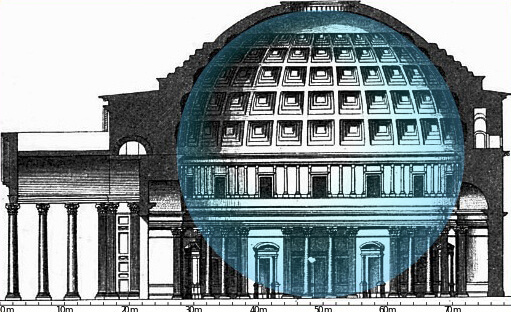
The proportions of the dome, the arrangement of columns, and the measurements of the interior all adhere to geometric and numerical patterns that hold potential symbolic meaning.
The ratio of the diameter of the dome to its height is approximately 2:1, which holds significance in ancient numerology as a symbol of balance and unity. Deciphering the full extent of this symbolism and numerology is an ongoing quest for historians and scholars.
Lost Artifacts of the Pantheon:
Over the centuries, the Pantheon has seen its fair share of looting, destruction, and repurposing. It is believed that numerous statues, altars, and other artworks that once adorned the Pantheon have been lost to time. Discovering these missing artifacts would shed light on the temple's original appearance and enhance our understanding of its artistic and cultural significance.
Acoustic Anomalies inside the Pantheon:
The Pantheon exhibits unique acoustic qualities that continue to captivate visitors. Sounds made near the center of the rotunda create an echo effect, amplifying and reverberating throughout the space. The exact reason behind this acoustic phenomenon, whether intentional or coincidental, remains a subject of speculation and fascination.
While these aspects may not be hidden or secretive per se, they add to the allure and mystery surrounding the Pantheon. Exploring the details and uncovering the architectural marvels of this ancient Roman temple can be a rewarding experience, deepening one's appreciation for the skill and ingenuity of the builders who created it.
Preservation and Legacy of the Pantheon
Despite the ravages of time and various calamities, including fires and invasions, the Roman Pantheon miraculously survived relatively intact. Its conversion into a Christian church played a crucial role in its preservation, sparing it from the destruction that befell many other ancient Roman temples.
Still, time and elements are not kind to monuments. Periodically, all monuments in Rome require restoration to preserve them, and the Pantheon is no exception.
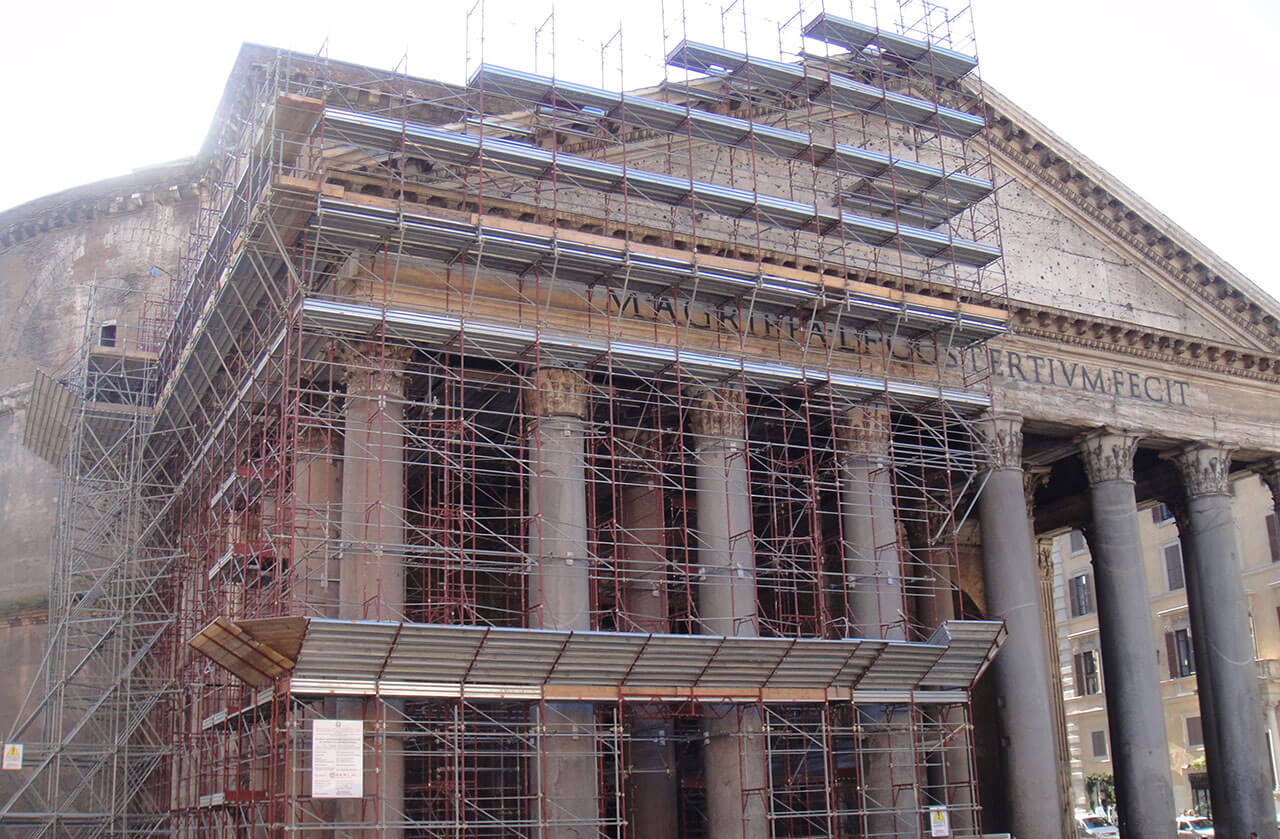
Today, the Roman Pantheon stands as a testament to the architectural genius and cultural legacy of ancient Rome that has captivated the world for centuries. Its enduring presence in Rome serves as a testament to the advanced engineering and artistic brilliance of ancient Rome.
As you stand in the presence of this divine marvel, immerse yourself in the rich history and intricate details, and marvel at the enduring legacy of this extraordinary structure.
Tips for Visiting the Pantheon in Rome:
Currently, to visit the Pantheon, admission tickets are required.
To fully enjoy your visit to the magnificent Pantheon, it is advisable to book Time Slot admission tickets online in advance to bypass long queues. When booking our Rome Tours with a visit to the Pantheon, we will provide you with the appropriate link to purchase your Pantheon Tickets at a suitable time slot.
As the Pantheon is a place of worship, it is essential to observe modesty dress codes by ensuring your shoulders and knees are covered. Countless visitors have unfortunately been denied entry due to not adhering to these guidelines.
To assist you in preparing for your Rome adventure, we have crafted useful blogs featuring recommendations on what to wear in Rome, and the best way to get around Rome.
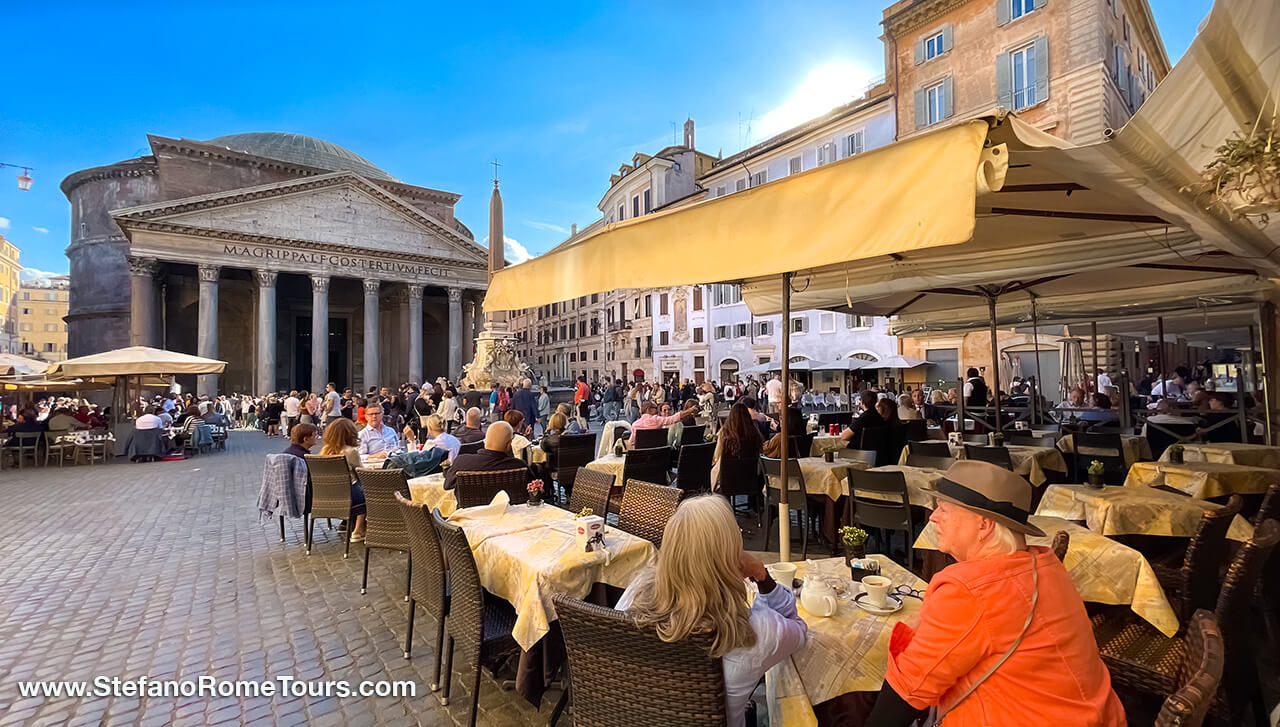
At Stefano Rome Tours, we believe that history is best experienced firsthand. Our Rome pre-cruise tours and Post Cruise excursions from Civitavecchia offer an immersive and personalized way to discover the secrets of ancient Rome.
Our professional English-speaking Drivers are passionate about sharing their expertise and creating unforgettable experiences tailored to your interests. Thank you for choosing Stefano Rome Tours for your next Rome adventure. We look forward to showing you beautiful places!
